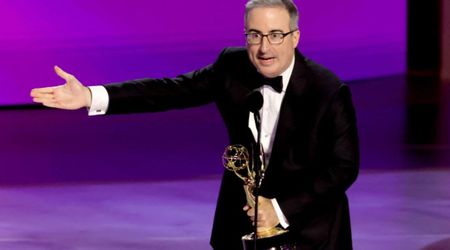The moment Elizabeth became Queen showed the strength that would define her 70-year reign

LONDON, ENGLAND: On February 6, 1952, the newly-named Queen Elizabeth II flew 4,000 miles back to Britain after learning about the death of her father, King George VI, while on a Commonwealth tour in Kenya. While Elizabeth II and Philip were alone, he told his wife that the King had passed away. After spending the night at the Treetops Hotel in Aberdare Forest watching a big game, the couple had been resting at Sagana Lodge, which had been given to them as a wedding gift by the people of Kenya. It was Philip's friend who gave him the message saying the King had died.
According to a close aide of the Duke, when Philip learned of George VI's passing, he appeared as though half the world had just been dropped on him. The new Queen, who was only 25 years old, was the same age as Elizabeth I when she ascended to the throne. The Queen was regarded as the second-longest reigning sovereign monarch in history and was the oldest and longest-serving head of state currently in office. She was also the longest-living and longest-reigning British monarch.
RELATED ARTICLES
King Charles III pays heartfelt tribute to his 'much loved Mother' Queen Elizabeth II
Queen Elizabeth II is dead, longest-reigning monarch was 96 years old
Elizabeth was seated at her desk in the lodge, looking "very composed, absolutely master of her fate," according to Lord Charteris, her private secretary at the time. She was prepared to carry out the role for which she had been painstakingly groomed to inherit.
After her father's death, Princess Elizabeth came to the throne, and she was asked which name she wanted to use as queen.
She allegedly responded by saying: "Of course, my own name.
What else?" The royal couple returned home on February 7, 1952 after the tour was canceled. Lord Charteris and Mr. Parker organized a plane at Entebbe, another from Mombasa to get there, and scheduled a London airport arrival for 4 pm the following day. They also worked out timetables, sent a barrage of signals, and packed up their belongings. By kissing her granddaughter's hand that afternoon, Queen Mary was the first to render official homage. Princess Elizabeth officially became queen the following day, on February 8 at a meeting of the Accession Council in St James's Palace to which the Privy Council's members were all invited.
On June 2, 1953, she was given her royal coronation in Westminster Abbey, which happened to be the same day that a Commonwealth team successfully scaled Mount Everest. The ceremony was broadcast around the globe via the then-emerging new medium of television. In spite of the torrential downpour, tens of thousands of people braved the rain to line the streets in front of Buckingham Palace, and 20 million people nationwide watched the event on television.
The Queen was given the St. Edward's Crown, and designer Norman Hartnell created a white satin gown for her coronation that was covered in diamonds, gold and silver bullion, seed pearls, crystals, and other precious stones.

In a speech she had written herself, Queen Elizabeth II made her first Christmas broadcast in 1952, promising to serve the Commonwealth and Empire's citizens "all the days of my life."
The Queen's public persona grew as she participated in the happy and sad times of Britain. She and Philip traveled from Sandringham when severe flooding struck the east coast in January 1953 to speak with victims and rescuers. Following her coronation, the Queen went on a cross-country tour, stopping in Scotland, Wales, and Northern Ireland while inspecting the RAF and Fleet. After inaugurating her second Parliament in November 1953, she traveled 50,000 miles throughout the Commonwealth.

In 1955, the Commonwealth's leaders gathered in London for the first time under her leadership, but by April, her own prime minister, Sir Winston Churchill, had resigned. The Queen dined at 10 Downing Street for the first time the day before he stepped down. She had a close relationship with the legendary statesman and made history in 1965 when she became the first monarch to attend a state funeral for one of her subjects.
The Queen named 14 more prime ministers after Sir Winston, including Sir Anthony Eden, Harold Macmillan, Sir Alec Douglas-Home, Edward Heath, Harold Wilson, James Callaghan, Margaret Thatcher, John Major, Tony Blair, Gordon Brown, David Cameron, Theresa May, Boris Johnson, and Liz Truss.
🤝 The Queen received Liz Truss at Balmoral Castle today.
— The Royal Family (@RoyalFamily) September 6, 2022
Her Majesty asked her to form a new Administration. Ms. Truss accepted Her Majesty's offer and was appointed Prime Minister and First Lord of the Treasury. pic.twitter.com/klRwVvEOyc
Queen Elizabeth II, the longest reigning monarch in modern history passed away today, September 8, at the age of 96. The late queen, who was reportedly suffering from ill health and mobility issues for some time now, died at her Balmoral residence just a few days after meeting UK's new Prime Minister Liz Truss on September 6. She carried the rare honor of holding the throne for over 70 years.










